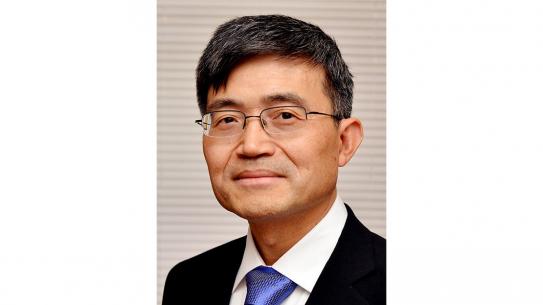Our Newest Faculty Additions
The opportunity to engage in cutting-edge collaborative research, the lure of being in one of the nation’s fastest growing tech hubs, the chance to work with world-class colleagues . . . there’s a long list of reasons our new faculty members are excited to be joining us. We’re every bit as excited to have them here. Read more about our latest group of talented professors below:
- Katherine Bennett: Working at the Crossroads of Art, Design, and Engineering
- Joe Chow: Creating the Transportation Systems of the Future
- Brendan Dolan-Gavitt: Smart Systems, Smarter Researchers
- Guido Gerig: Visualizing Medical Advancements
- Ari Ginsberg: Where Engineering and Business Interact
- Ryan Hartman: Going with the Flow
- Damon McCoy: Scammers and Spammers Beware
- Andrew Papanicolaou: FRE and Clear
- Itay Tal: The Blackboard and Beyond
Katherine Bennett: Working at the Crossroads of Art, Design, and Engineering
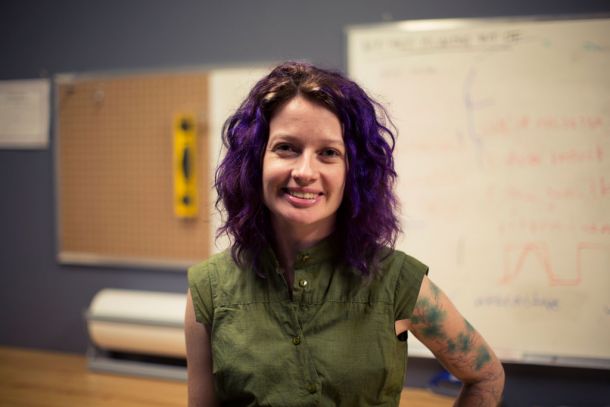 Katherine Bennett sometimes asks her students what superpowers they possess, but she doesn’t want to hear flying or anything as oft-mentioned as that. If they can envision it, she tells them, they can create it. “I want them to know that if they have an idea, they can bring it to fruition,” she says. “It's empowering to bring your idea into reality.” Bennett will be teaching Creative Coding, a class that she expects to attract a wide variety of learners—from freshmen to graduate students. “There might be people who have not thought of themselves as technically inclined and others who want to expand their understanding of what is possible with programming,” she explains. “We are going to put a visual spin on it—programming doesn’t result in just lines; we’ll work with images, graphics, audio, physical objects and anything else you can dream up.”
Katherine Bennett sometimes asks her students what superpowers they possess, but she doesn’t want to hear flying or anything as oft-mentioned as that. If they can envision it, she tells them, they can create it. “I want them to know that if they have an idea, they can bring it to fruition,” she says. “It's empowering to bring your idea into reality.” Bennett will be teaching Creative Coding, a class that she expects to attract a wide variety of learners—from freshmen to graduate students. “There might be people who have not thought of themselves as technically inclined and others who want to expand their understanding of what is possible with programming,” she explains. “We are going to put a visual spin on it—programming doesn’t result in just lines; we’ll work with images, graphics, audio, physical objects and anything else you can dream up.”
Bennett’s own art explores the social relationships that result when time is manipulated, and she maintains a deep interest in the non-physical manifestations of thought, communication and memory. One of her most-discussed installations, “The Depository,” provides an interactive platform through which users can record messages for others or listen to messages others have left. “The Depository,” she says, provides not only a vehicle for personal expression but a sonic portal to other worlds‐building community, enabling connection, and by default, creating an entirely new space.
Another work, “Then Ether,” is a responsive sound and light environment that invites visitors to record themselves. The piece acts autonomously, playing those “sound memories” back within the installation space, indicating the history of the space. The files are then stored in a database to be played back randomly and fractured at different times. “At times, the installation space is relatively calm and quiet. At other times, the space swells with sound, triggering many ‘memories’ (sound files) at one time, creating a mild cacophony,” Bennett writes on her Website. “This is symbolic to the haphazard and random nature of memory, as well as the questionability of being able to access it.”
A graduate of Ohio University, England’s Wolverhampton School of Art & Design, and the School of the Art Institute of Chicago, Bennett taught at the University Nevada Reno and the University of the Arts, in Philadelphia, before joining the School of Engineering’s Department of Technology, Culture and Society. She has overseen numerous exhibitions of student work and hopes to do the same here. (She will be leading a senior capstone offering in addition to her coding class.) “I think of technology as a central nervous system,” she says. “Programming is fundamental, and it can generate a whole body of artwork.”
To read more about her work, visit www.katherinebennett.net
Joe Chow: Creating the Transportation Systems of the Future
 Joe Chow describes himself as a bridge-builder—a particularly apt metaphor given his recent appointment as an assistant professor in the Department of Civil and Urban Engineering. “Designing transportation systems is a multidisciplinary pursuit,” he explains, “and I anticipate closely collaborating with other departments from across the School of Engineering and the entire university.”
Joe Chow describes himself as a bridge-builder—a particularly apt metaphor given his recent appointment as an assistant professor in the Department of Civil and Urban Engineering. “Designing transportation systems is a multidisciplinary pursuit,” he explains, “and I anticipate closely collaborating with other departments from across the School of Engineering and the entire university.”
Chow—who employs mobile computing, information technology, and big-data analysis—aims to make systems smarter, more responsive, and more cost-efficient. One of his recent projects involved designing the infrastructure for a fleet of electric-powered taxis in Seoul, South Korea. (The vehicles are carefully dispatched based on customer demand and the proximity of charging stations.) He’s also studied how widening the Panama Canal will affect cargo flow to ports and made recommendations to California legislators about needed truck regulation; explored ways to encourage sports fans and concert-goers to take public transportation to large events; and devised modeling to predict the risk of auto accidents in various weather conditions.
Some of the research he’s looking forward to pursuing at the NYU Polytechnic School of Engineering involves self-driving vehicles. Would it ever be possible for the MTA to use them, he wonders. How could they alleviate traffic and parking problems? “New York City is a great test bed for studies like this,” he says. “It’s been predicted that by 2050, seven billion of the world’s people will live in cities, and transportation issues are only going to become more pressing with steadily increasing urbanization.”
With his move to New York, Chow (formerly the Canada Research Chair in Transportation Systems Engineering at Canada’s Ryerson University and the founder of the Ryerson Urban Transportation Lab) is experiencing a homecoming of sorts: as a teen he attended Manhattan’s Stuyvesant High School, and his wife is a graduate of NYU’s Stern School of Business. Both have family in the area. “I was excited to learn of the merger between NYU and Poly,” he recalls. “I knew it would present incredible opportunities for vital collaborative research, and I’m eager to get started.”
Brendan Dolan-Gavitt: Smart Systems, Smarter Researchers
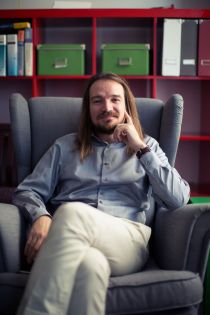 “Software has expanded into nearly every aspect of modern life, from cars to coffee makers,” Assistant Professor Brendan Dolan-Gavitt, one of the newest members of the Department of Computer Science and Engineering, explains. “This expansion into new areas has not been accompanied by safer programming practices, however, and the safety and reliability of these devices is highly suspect.”
“Software has expanded into nearly every aspect of modern life, from cars to coffee makers,” Assistant Professor Brendan Dolan-Gavitt, one of the newest members of the Department of Computer Science and Engineering, explains. “This expansion into new areas has not been accompanied by safer programming practices, however, and the safety and reliability of these devices is highly suspect.”
Dolan-Gavitt can point to a number of incidents in which systems were compromised—from automotive brakes being disabled remotely to a German steel plant targeted by cyber-terrorists whose blast furnace exploded in the wake of control outages. He paints a vivid picture that highlights just why his research—which has led to new ways of understanding the behavior of large, real-world systems and producing novel defenses against attacks—is vital. One of his recent projects has been funded by the Office of Naval Research. “Embedasploit: a Pen-test in a Box for Industrial Control Systems,” as the project has been dubbed, will create a system to fingerprint an industrial control network, catalog its known flaws, emulate the whole system for simulation and outline a model that prevents hackers from listening to system activity, injecting malicious traffic or obtaining binary code.
Dolan-Gavitt’s graduate students can look forward to joining him on that project and many others. “Education in computer science serves two vital but sometimes opposing interests,” he asserts. “It introduces students to the body of scholarship and knowledge in the field, giving them the understanding they need to eventually build on existing work and make their own contributions—in other words, it prepares them to be a new generation of scholars. At the same time, it is undeniable that most students in computer science will seek jobs in industry, so it’s the duty of an educator to inculcate practical skills and habits. I want to provide educational experiences that can serve both those interests.”
He’s looking forward to working with students in the Information Systems and Internet Security lab and is already preparing to pitch in with Cyber Security Awareness Week. “Excellence in teaching is just as important as achievements in research,” he says. “The latter helps push forward the frontiers of human knowledge today, the former trains the scientists of tomorrow.”
Guido Gerig: Visualizing Medical Advancements
Glance at Guido Gerig’s computer screen, and you might think you’re looking at a piece of art from the Guggenheim or MoMA. Those bursts of color are not mere abstract designs, however, but attempts to visualize the mysteries of the human brain.
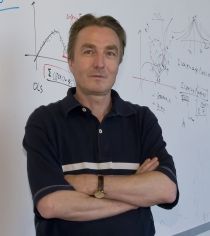 Gerig, a new professor in the Department of Computer Science and Engineering, is among the world’s foremost authorities in the field of medical image analysis, and, as such, he has worked with radiologists, psychologists, child-development experts, and others to devise ways to extract the most possible information from scans of the human brain. His seminal work has led to a deeper understanding of how autism can be predicted, how traumatic brain injuries can best be treated, how the normal brain develops, and more. He was an integral part, for example, of the Infant Brain Imaging Study (IBIS), a landmark project funded by the National Institutes of Health and aimed at identifying babies at risk for developing autism. Gerig devised software that analyzed scans produced by Diffusion Tensor Imaging (DTI) to show that infants who later developed the condition exhibited early abnormalities in nerve connectivity.
Gerig, a new professor in the Department of Computer Science and Engineering, is among the world’s foremost authorities in the field of medical image analysis, and, as such, he has worked with radiologists, psychologists, child-development experts, and others to devise ways to extract the most possible information from scans of the human brain. His seminal work has led to a deeper understanding of how autism can be predicted, how traumatic brain injuries can best be treated, how the normal brain develops, and more. He was an integral part, for example, of the Infant Brain Imaging Study (IBIS), a landmark project funded by the National Institutes of Health and aimed at identifying babies at risk for developing autism. Gerig devised software that analyzed scans produced by Diffusion Tensor Imaging (DTI) to show that infants who later developed the condition exhibited early abnormalities in nerve connectivity.
As a child in his native Switzerland, Gerig spent hours taking apart radios, watches, and small appliances to discover their inner workings. Earning pocket money one summer by washing windows in a piano factory, he observed carefully to see how the instruments were put together. He applies that same insatiable curiosity to his research today. While those with whom he’s worked make liberal use of terms like “genius” and “miracle worker,” Gerig himself modestly stresses the collaborative nature of his work and the team efforts involved. “I feel privileged to work with wonderful clinicians and to step in to provide visualizations and quantitative data that can be useful to them,” he says. ““It’s very motivating as a computer scientist to make contributions to healthcare and potentially help improve life for so many people.”
Gerig, the recipient of numerous teaching awards, encourages his students to find a similarly rewarding niche. A student of his once explained to a journalist: “He always relates back to the real world, reminding us not just to stick to our textbooks, but that we need to do research that is actually meaningful.”
Ari Ginsberg: Where Engineering and Business Intersect
 A quarter-century ago, the NYU Polytechnic School of Engineering, then known as Polytechnic University, realized that ensuring success in a rapidly changing business world would require effectively using technology, embracing innovation, and inculcating a spirit of entrepreneurship. Businesses would increasingly need forward-thinking managers capable of strong leadership, design thinking, vision, and creativity. Since then, the Department of Technology Management and Innovation has offered an M.S. degree in Management of Technology (MOT), aimed at producing professionals able to bridge the gap between the worlds of business and tech—and conversant with the latest developments in both.
A quarter-century ago, the NYU Polytechnic School of Engineering, then known as Polytechnic University, realized that ensuring success in a rapidly changing business world would require effectively using technology, embracing innovation, and inculcating a spirit of entrepreneurship. Businesses would increasingly need forward-thinking managers capable of strong leadership, design thinking, vision, and creativity. Since then, the Department of Technology Management and Innovation has offered an M.S. degree in Management of Technology (MOT), aimed at producing professionals able to bridge the gap between the worlds of business and tech—and conversant with the latest developments in both.
In addition to a silver anniversary, there’s another reason to celebrate in 2015. MOT now has a new Academic Program Director with a long list of honors and accomplishments to his credit: Ari Ginsberg.
Dr. Ginsberg—who has published numerous articles in leading scholarly journals and has sat on the editorial boards of such prestigious publications as the Academy of Management Review, the Journal of International Business, Organization Science, and the Strategic Management Journal—also serves as a Professor of Entrepreneurship and Management at NYU's Stern School of Business, further cementing the strong collaborative bond between the two schools. “The world needs businesspeople who understand how scientists and technologists think,” he explains, “as well as scientists and technologists sensitive to the needs of business and the marketplace. Because those worlds increasingly intersect, we need to educate people who are comfortable moving between them.”
The former Director of the Berkley Center for Entrepreneurship and Innovation at NYU and the recipient of the Citibank Excellence in Teaching Award and the Peter Drucker Fellowship, among other such honors, Professor Ginsberg seeks to help all of his students reach what he calls their “a-ha moments.” “We can’t simply teach textbook techniques that will be of use only when facing straightforward problems,” he says. “In situations that are highly complex and uncertain, our students must be able to think on their feet and adapt quickly.” He continues, “We don’t aim just to impart knowledge to them because knowledge becomes obsolete so quickly, but we do aim to help them develop critical thinking skills that will benefit them throughout their entire lives.”
Ryan Hartman: Going with the Flow
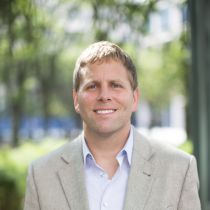 To speak to Ryan Hartman, a new professor in the Department of Chemical and Biomolecular Engineering, is to get a fascinating lesson in not only chemistry but in history. For hundreds of years, he explains, chemists have conducted synthesis in what is called batch mode, stirring their raw materials and regents in round-bottomed flasks or other vessels and then laboriously separating the desired product from the detritus once the reaction has taken place.
To speak to Ryan Hartman, a new professor in the Department of Chemical and Biomolecular Engineering, is to get a fascinating lesson in not only chemistry but in history. For hundreds of years, he explains, chemists have conducted synthesis in what is called batch mode, stirring their raw materials and regents in round-bottomed flasks or other vessels and then laboriously separating the desired product from the detritus once the reaction has taken place.
It’s not a process that translates easily or efficiently to the real world, and for large-scale industrial purposes, chemists have started to use continuous-flow technology, which streamlines the reaction and purification process safely, cleanly, and cost-effectively.
Hartman, who says that the translation of laboratory discoveries to the real world is probably among the grandest challenges and roadblocks to economic growth, is bringing those advantages to the lab with the help of continuous-flow micro-reactors, and the theoretical models he is developing are of enormous value in the pharmaceutical industry, energy sector, and elsewhere. (Working “in flow” in the lab ultimately makes it much easier for manufacturers to scale up the process, to name just one advantage; the high-throughput discovery of science is another.)
Among the substances Hartman—who was recently honored as a Visiting Assistant Professor of the Institute of Condensed Matter Chemistry, in Bordeaux—is studying are ligand and heterocycles used in the preparation of fine chemicals and pharmaceuticals; and asphaltenes, molecules found in crude oil that have been used in roof shingles and paving materials, among other products. He is also examining natural gas hydrates that take the form of crystalline water-based solids—a potentially useful energy resource but one that could also cause damage by plugging pipelines.
“Diversity is a main ingredient of imagination, and the NYU Polytechnic School of Engineering is going to be an inspiring place to carry on my research,” Hartman, the recent recipient of a prestigious NSF CAREER Award, says. “An organization becomes great because it is made up of great people, and by that standard, this is one of the greatest. People truly are the reactants and the products of education.”
Here, he intends to train a new generation of great scientists and global leaders in their fields. “I want my students to be strong in their core areas, but also to build and participate in multidisciplinary teams,” he asserts. “They need to be critical and innovative thinkers who possess soft skills. No matter where they end up working—in industry, academia, or government—the problems they’ll face as engineers are getting tougher. I want to make sure they’re up for the challenge.”
Damon McCoy: Scammers and Spammers Beware
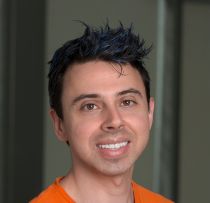 Damon McCoy, a new assistant professor in the Department of Computer Science and Engineering, researches wireless privacy, anonymous communication systems, cyber-physical security (which relates to systems like power grids and smart automotives), and the economics of e-crime. He thus spends much of his time studying shady on-line realms most of us don’t even like to think about. But if you’ve ever been annoyed by intrusive pop-up ads, been spammed by an untrustworthy-sounding pharmaceutical company, or taken in by a scam posting on Craigslist, you’ll appreciate the importance of his work.
Damon McCoy, a new assistant professor in the Department of Computer Science and Engineering, researches wireless privacy, anonymous communication systems, cyber-physical security (which relates to systems like power grids and smart automotives), and the economics of e-crime. He thus spends much of his time studying shady on-line realms most of us don’t even like to think about. But if you’ve ever been annoyed by intrusive pop-up ads, been spammed by an untrustworthy-sounding pharmaceutical company, or taken in by a scam posting on Craigslist, you’ll appreciate the importance of his work.
Among his most recent projects has been studying ad injection, in which users find that they are seeing intrusive, annoying ads either in addition to, or different from, the ads the Websites they’re visiting intentionally sent. “Web injection refers to when malicious and unwanted parties tamper directly with browser sessions to redirect search traffic, insert rogue tracking pixels, hijack cookies to spam a user’s email contacts and online social networks, or steal personal financial data,” McCoy explains. “And within that broad ecosystem, ad injection reigns as one of the most lucrative strategies for profiting from browser traffic.” When he and his fellow researchers discovered that ad injection was impacting more than 1 in 20 unique daily IP addresses accessing Google—tens of millions of users around the globe—they contacted the reputable advertisers affected to alert them to the deceptive practices being deployed by the injectors. He has also recently examined a phenomenon in which miscreants register fraudulent accounts in bulk to obtain cheap email addresses and social network credentials—even when the supposedly secure method of phone verification was required. (Malicious actors, he discovered, were purchasing Google phone-verified accounts through a number of black-market forums and online storefronts—and, disturbingly, prices were dropping.)
McCoy—a former Computer Innovation Fellow at the University of California, San Diego—comes to Brooklyn from a post at George Mason University. Here, he’ll teach courses in network security. “Of course, I’ll focus on the fundamental concepts,” he says, “but I also want students to learn about and use cutting-edge tools. When they graduate, they’re going to be a strong line of defense against cybercrime and network intrusions.”
Andrew Papanicolaou: FRE and Clear
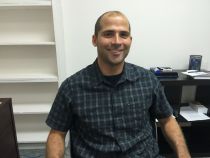 Assistant Professor Andrew Papanicolaou, the newest addition to the Department of Finance and Risk Engineering, has a firm plan for the students in his Quantitative Methods in Finance and Dynamic Assets & Option Pricing courses. “I have a clear vision for what they’ll learn during the semester and very detailed syllabi outlining the expectations and goals,” he says. “These will be challenging courses, but there won’t be any surprises.”
Assistant Professor Andrew Papanicolaou, the newest addition to the Department of Finance and Risk Engineering, has a firm plan for the students in his Quantitative Methods in Finance and Dynamic Assets & Option Pricing courses. “I have a clear vision for what they’ll learn during the semester and very detailed syllabi outlining the expectations and goals,” he says. “These will be challenging courses, but there won’t be any surprises.”
Papanicolaou’s area of focus is probability theory and methods of pricing and hedging for derivative markets. “I deal with activity on an institutional level,” he explains. “My research is of interest to banks, hedge funds, and the Federal Reserve, rather than to individual investors.” Indeed, the titles of some of Papanicolaou’s recent papers—“Extreme-Strike Comparisons and Structural Bounds for the VIX and SPX Options Markets,” “Filtering the Maximum Likelihood for Multiscale Problems,” “Implied Filtering Densities on the Hidden State of Stochastic Volatility”—might intimidate even the savviest and most well-informed of laypeople.
Papanicolaou, however, has the field in his blood: his father, George, a well-respected figure in math circles, is the Robert Grimmett Professor of Mathematics at Stanford University, where he helps manage the master’s program in financial mathematics. There’s an NYU connection there as well. George Papanicolaou earned his master’s and doctoral degrees from Courant in the late 1960s and subsequently taught at the school for years.
“I was extremely enthusiastic when the opportunity presented itself to join the faculty of the NYU Polytechnic School of Engineering,” Papanicolaou, who was recently named a Practicing Fellow of the Institute for Pure and Applied Mathematics (IPAM), says. “I have been lecturing at the University of Sydney’s School of Mathematics & Statistics, but the chance to teach and conduct research in New York City is very exciting.”
Itay Tal: The Blackboard and Beyond
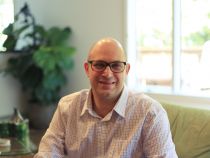 As an industry assistant professor of computer science, Itay Tal dwells in a high-tech world, but among his favorite teaching tools is the decidedly low-tech blackboard. “Not only does this give the students more time to think and digest the material,” he asserts, “it also allows for greater flexibility to emphasize, re-explain, demonstrate and illustrate based on the reaction of the students, their body language, and their questions.”
As an industry assistant professor of computer science, Itay Tal dwells in a high-tech world, but among his favorite teaching tools is the decidedly low-tech blackboard. “Not only does this give the students more time to think and digest the material,” he asserts, “it also allows for greater flexibility to emphasize, re-explain, demonstrate and illustrate based on the reaction of the students, their body language, and their questions.”
That intense focus on his students and how best to teach them has been a hallmark of Tal’s entire career. “Taking a complex idea and simplifying it to a level that makes sense to an audience is so uplifting and satisfying to me that I made it my profession,” he explains. “As an instructor, I set high standards, and then commit myself to serving my students with whatever means necessary to ensure their success.” He continues, “I try to guide them towards rigor and deep understanding, and yet, I have to make that narrow path broadly accessible and inviting to every student. This challenge becomes even greater in light of the complexity of the computer science discipline.”
Tal is a native of Israel, where he studied and taught at Tel Aviv University, among other institutions, and he is happy now to be working in Brooklyn, another world-class tech hub. Here, he’s teaching seminal courses important to any aspiring computer scientist— Design and Analysis of Algorithms I and Foundations of Computer Science—and he is looking forward to teaching the freshmen in his “Introduction to Programming and Problem Solving” class. He says, “I am confident that by conveying principles and not only techniques, by encouraging a dialogue, and by keeping flexibility during the lesson, computer science can be skillfully taught so it both educates and excites students.”




